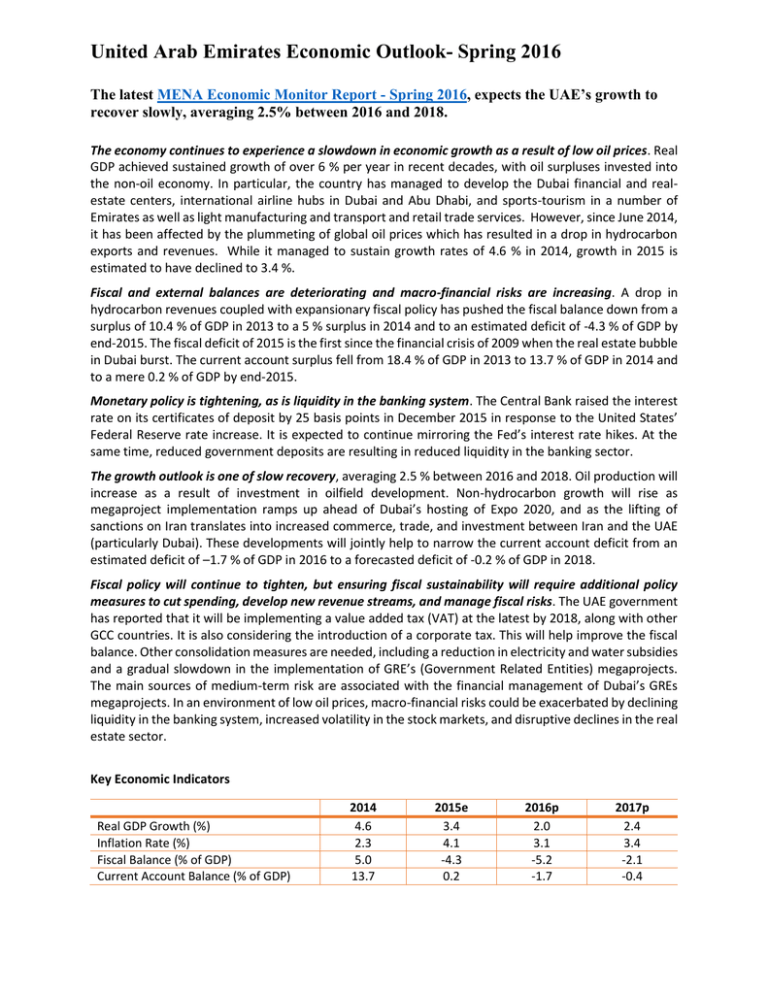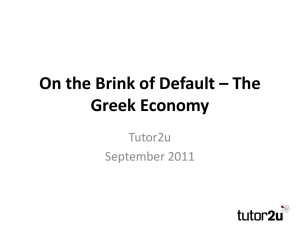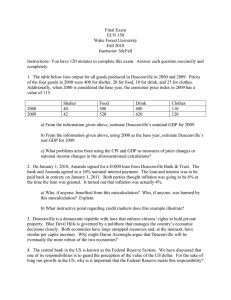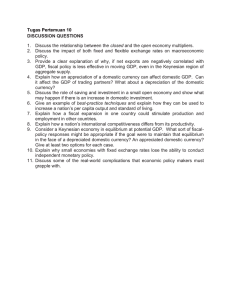United Arab Emirates Economic Outlook
advertisement

United Arab Emirates Economic Outlook- Spring 2016 The latest MENA Economic Monitor Report - Spring 2016, expects the UAE’s growth to recover slowly, averaging 2.5% between 2016 and 2018. The economy continues to experience a slowdown in economic growth as a result of low oil prices. Real GDP achieved sustained growth of over 6 % per year in recent decades, with oil surpluses invested into the non-oil economy. In particular, the country has managed to develop the Dubai financial and realestate centers, international airline hubs in Dubai and Abu Dhabi, and sports-tourism in a number of Emirates as well as light manufacturing and transport and retail trade services. However, since June 2014, it has been affected by the plummeting of global oil prices which has resulted in a drop in hydrocarbon exports and revenues. While it managed to sustain growth rates of 4.6 % in 2014, growth in 2015 is estimated to have declined to 3.4 %. Fiscal and external balances are deteriorating and macro-financial risks are increasing. A drop in hydrocarbon revenues coupled with expansionary fiscal policy has pushed the fiscal balance down from a surplus of 10.4 % of GDP in 2013 to a 5 % surplus in 2014 and to an estimated deficit of -4.3 % of GDP by end-2015. The fiscal deficit of 2015 is the first since the financial crisis of 2009 when the real estate bubble in Dubai burst. The current account surplus fell from 18.4 % of GDP in 2013 to 13.7 % of GDP in 2014 and to a mere 0.2 % of GDP by end-2015. Monetary policy is tightening, as is liquidity in the banking system. The Central Bank raised the interest rate on its certificates of deposit by 25 basis points in December 2015 in response to the United States’ Federal Reserve rate increase. It is expected to continue mirroring the Fed’s interest rate hikes. At the same time, reduced government deposits are resulting in reduced liquidity in the banking sector. The growth outlook is one of slow recovery, averaging 2.5 % between 2016 and 2018. Oil production will increase as a result of investment in oilfield development. Non-hydrocarbon growth will rise as megaproject implementation ramps up ahead of Dubai’s hosting of Expo 2020, and as the lifting of sanctions on Iran translates into increased commerce, trade, and investment between Iran and the UAE (particularly Dubai). These developments will jointly help to narrow the current account deficit from an estimated deficit of –1.7 % of GDP in 2016 to a forecasted deficit of -0.2 % of GDP in 2018. Fiscal policy will continue to tighten, but ensuring fiscal sustainability will require additional policy measures to cut spending, develop new revenue streams, and manage fiscal risks. The UAE government has reported that it will be implementing a value added tax (VAT) at the latest by 2018, along with other GCC countries. It is also considering the introduction of a corporate tax. This will help improve the fiscal balance. Other consolidation measures are needed, including a reduction in electricity and water subsidies and a gradual slowdown in the implementation of GRE’s (Government Related Entities) megaprojects. The main sources of medium-term risk are associated with the financial management of Dubai’s GREs megaprojects. In an environment of low oil prices, macro-financial risks could be exacerbated by declining liquidity in the banking system, increased volatility in the stock markets, and disruptive declines in the real estate sector. Key Economic Indicators Real GDP Growth (%) Inflation Rate (%) Fiscal Balance (% of GDP) Current Account Balance (% of GDP) 2014 4.6 2.3 5.0 13.7 2015e 3.4 4.1 -4.3 0.2 2016p 2.0 3.1 -5.2 -1.7 2017p 2.4 3.4 -2.1 -0.4






